Travel the 23 mile section of the Historic Columbia River Highway, known as ‘Waterfall Corridor’ (or ‘Waterfall Alley’).
Read on (or listen) to find out more about how to navigate the wonders of the Columbia River Gorge.
Where in Oregon
Are you wondering where to find the Historic Columbia River Highway? This map should help.
#1 – Portland Women’s Forum State Scenic Viewpoint
Just between you and me: Far more people bypass this viewpoint in a hurry to go see the Vista House, which does indeed offer outstanding views. Too bad, as the Women’s Forum Viewpoint fits the Vista House into the frame, creating a sense of scale unrivaled anywhere else in the region.
The viewpoint is named for the Portland Women’s Forum, a women’s group whose activities and advocacy in the Gorge date back to 1946. In its earliest days, the Portland Women’s Forum recognized the value of preserving the views on Chanticleer Point, named for a hotel that stood there in the early 1900’s. The group held teas and fundraisers to preserve and protect the property—and purchased 3.7 more acres atop the bluff in 1956. Seven years later, they turned the property over to the state of Oregon.
Today, it’s easy to see the bluff’s appeal. This viewpoint offers your first real view of the Gorge from along the Historic Columbia River Highway—and one of its best. On a clear day, one can see the Vista House, Beacon Rock, and the broader Gorge to the east.
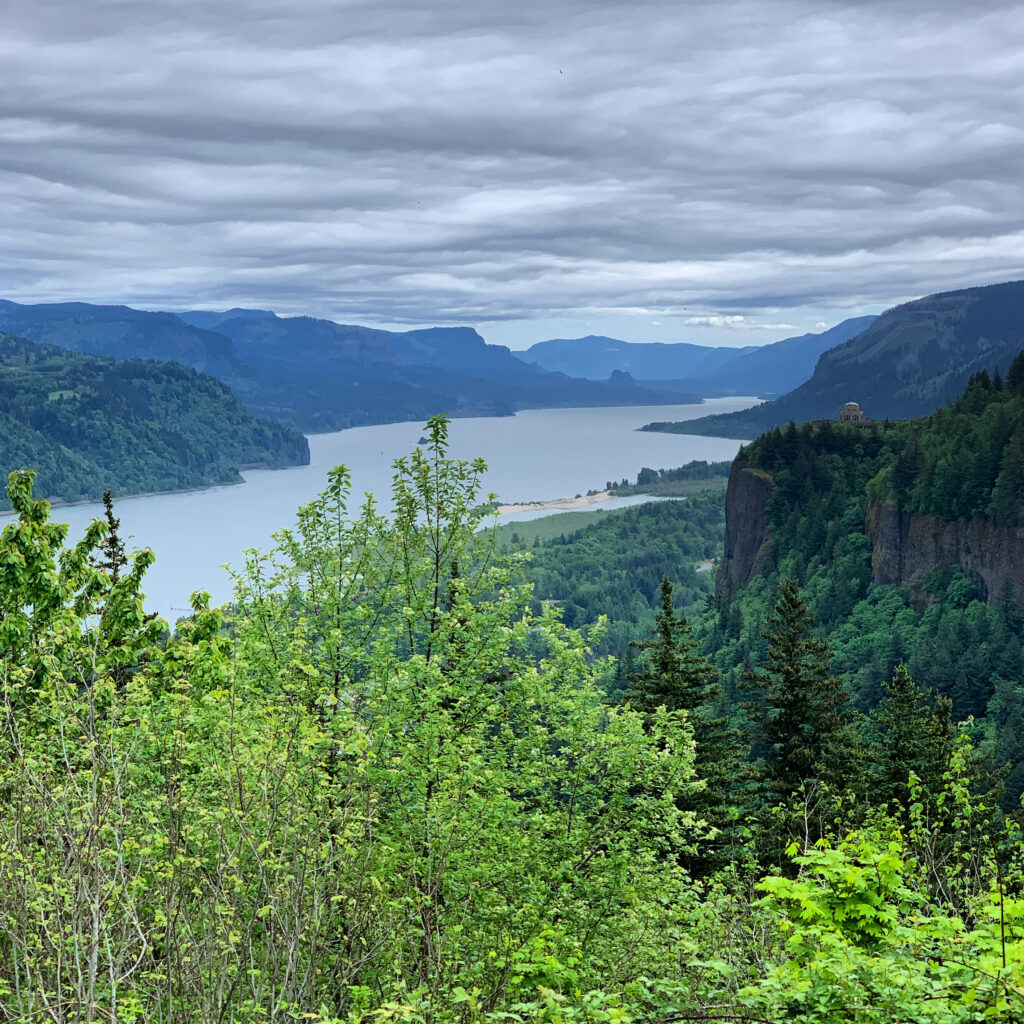
#2 – Vista House at Crown Point
In the heart of a U-shaped bend, sits the Vista House, atop Crown Point—one of the most popular stops along this journey and, at nearly 700 feet above the Columbia River, the highest point along the highway accessible to vehicles.
For years, the Vista House was just as famous because of its outrageous construction cost, as for its outstanding views. In its infancy, the eight-sided Vista House was envisioned as a little more than a ‘comfort station’ for travelers along the brand-new highway. But as plans for the rest stop grew more ambitious, costs swelled to $100,000 when the Vista House was dedicated in 1918. At the time, critics called it the “$100,000 Outhouse”. Even now, one of the more common names you’ll hear for the Vista House is “the million-dollar bathroom”.
To be fair, Samuel Lancaster, the visionary who designed the Historic Columbia River Highway, also saw the Vista House as: “a quiet respite where the Gorge could be viewed in silent communion with the infinite.”
Today, there’s almost nothing silent about the Vista House, which sees more than half a million visitors every year. Sure you can still use the bathrooms at the extravagant rest stop, but the old women’s lounge has been replaced with a snack bar serving ice cream, snacks, and espresso. And the one-time men’s area now hosts a gift shop and interpretive displays on the natural history and geographic highlights of the Columbia River Gorge.
Views extend from Portland in the west to the heart of the Gorge, 12 miles to the east. Wind gusts up to tornado speed have been recorded. The Vista House itself closes on especially blustery days.
While you are here, it’s worth noting the architecture of the so-called ‘million-dollar bathroom’. Tasked with building a restroom along the developing highway, Portland architect Edgar Lazarus saw the chance to construct what he called: “a temple to the natural beauty of the Gorge.” That sense of grandeur permeates the Vista House, inside and out. Its foundation was laid by the same Italian masons who built retaining walls and bridges all along the highway, rare Alaskan marble provided the floor and stairway inside, and amber-colored glass tiles ring the top of the 55-foot-high structure.
In 1974, the Vista House was added to the National Register of Historic Places. Not bad for a fancy bathroom.
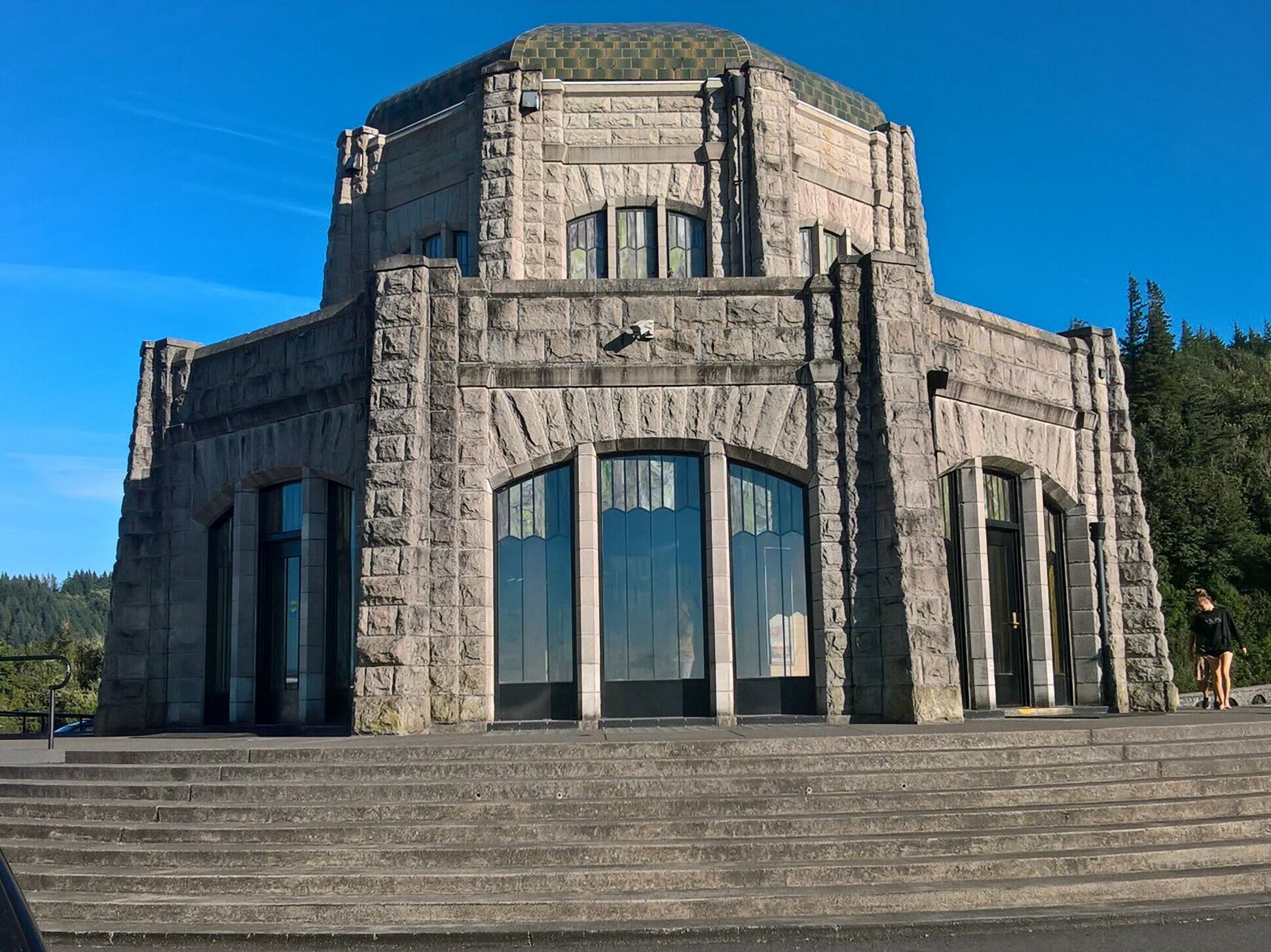
#3: Latourell Falls and Trailhead
Latourell Falls is just a quick walk from the parking area at Guy W. Talbot State Park. One of the busiest and most photographed waterfalls in the Gorge, Latourell Falls tumbles more than 200 feet, cascading in an amphitheater of lichen-colored columnar basalt pillars. These iconic pillars were created more than 10 million years ago during the Columbia River basalt flows.
Starting across from the parking area is an opportunity for one of the area’s best hikes. A three-mile loop gains almost 900 feet before returning to the highway at Latourell Falls, cascading in an amphitheater of columnar basalt. You can reach Latourell Falls—among the Gorge’s most famous and photographed waterfalls—with a quick, flat walk from the highway. But the longer hike passes by a second waterfall in a lush, forested canyon along the way—and is well worth your time.
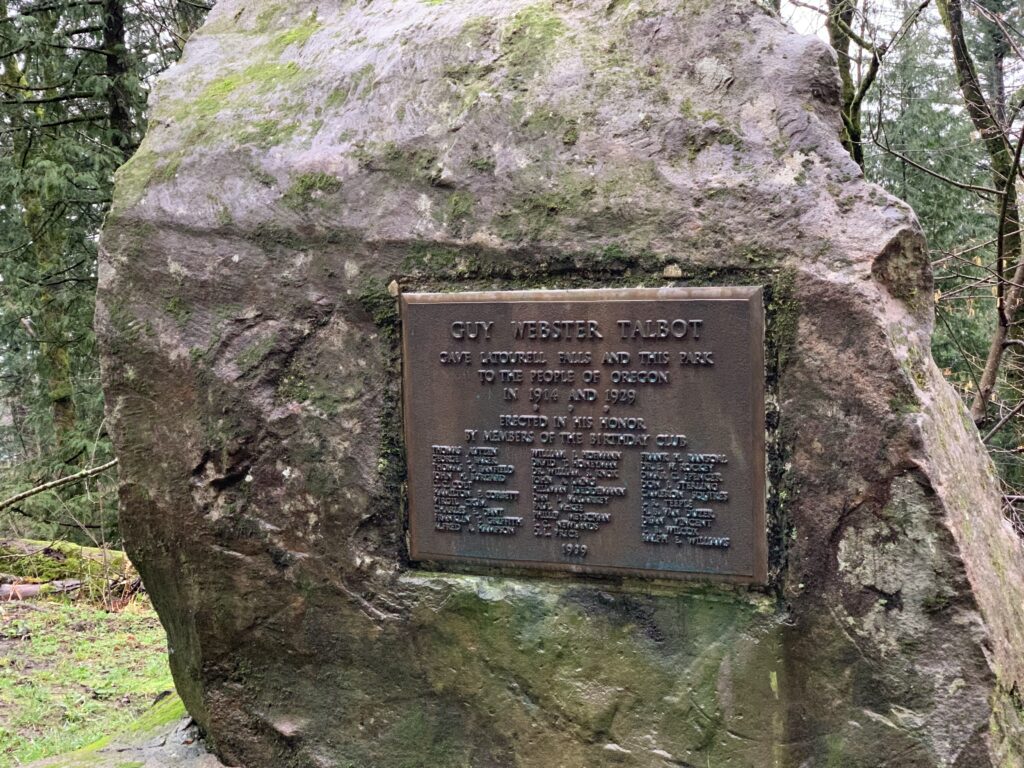
#4: Bridal Veil Falls
I really recommend a stop at the Bridal Veil Falls State Scenic Viewpoint for a pair of easier hikes. This is also the location for parking to use Sasquatch Shuttles. Two paths depart from the trailhead at Bridal Veil Falls; One is a paved, 0.6-mile (mostly flat) loop trail that shows off Gorge cliffs, springtime wildflowers, and natural history with interpretive panels. The other trail is a 0.8-mile round-trip hike that descends to a viewpoint of the 120-foot Bridal Veil Falls. This area was the site of a paper mill and a lumber mill in the late 1800s and early 1900s. The lumber mill even diverted the creek for decades, leaving the waterfall to run dry.
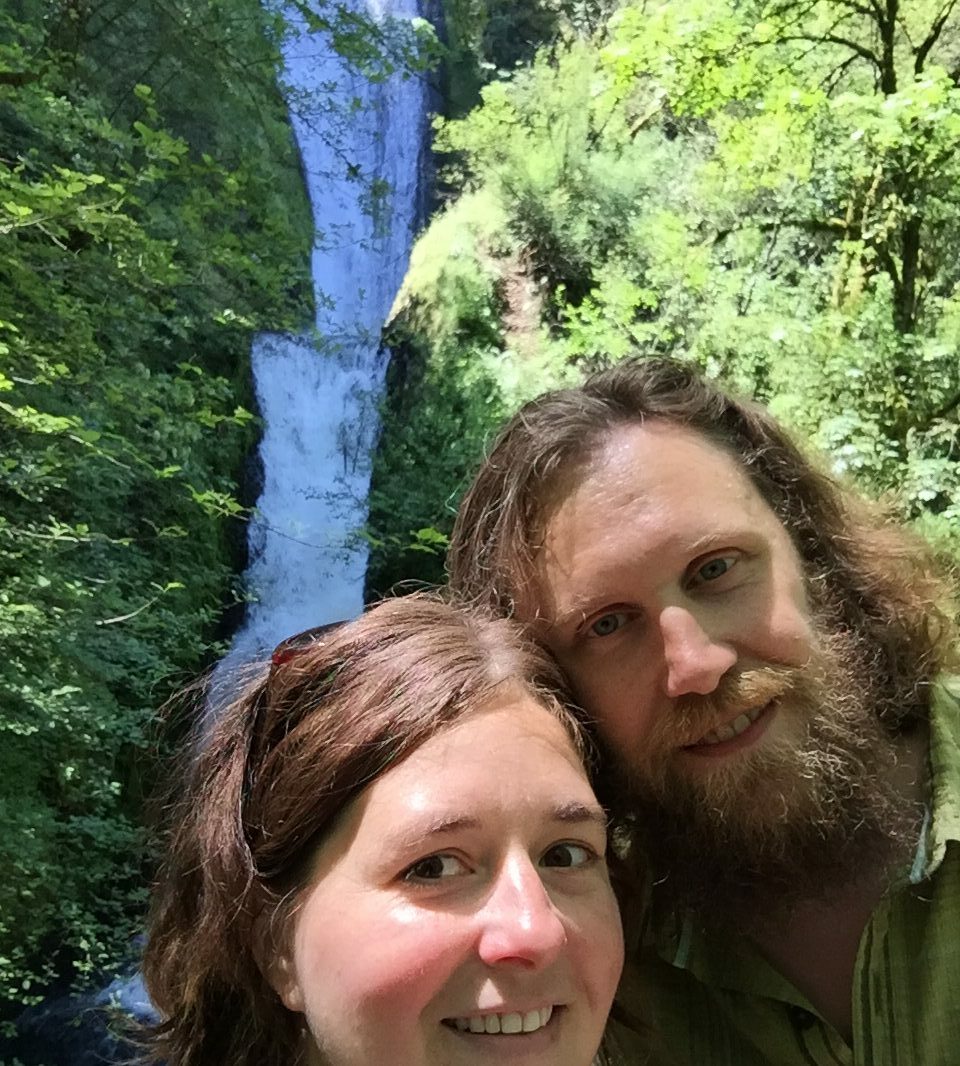
#5: Toothrock Trailhead & Wahclella Falls
There is much geological, historical and Pacific Northwest beauty to behold in this region. Maybe you are ready to steep yourself in the history of this land?
By taking the lesser known 5.5 mile Toothrock Trail hike, you can see where the first wagons made their way around the gigantic monolith of Toothrock in the 1850s. If you have the stamina, a one mile hike up to Wauna Viewpoint provides sweeping vistas of the Gorge and of Beacon Rock on the Washington side of the Gorge.
A turn away from the river at the Bonneville Dam exit will reveal signs to Toothrock Trailhead and the Historic Columbia River Highway State Trail, a bicycling adventure opportunity that will eventually connect over 70 miles of pathways. Also found at this exit is a 2 mile out and back family friendly hike to Wahclella Falls.
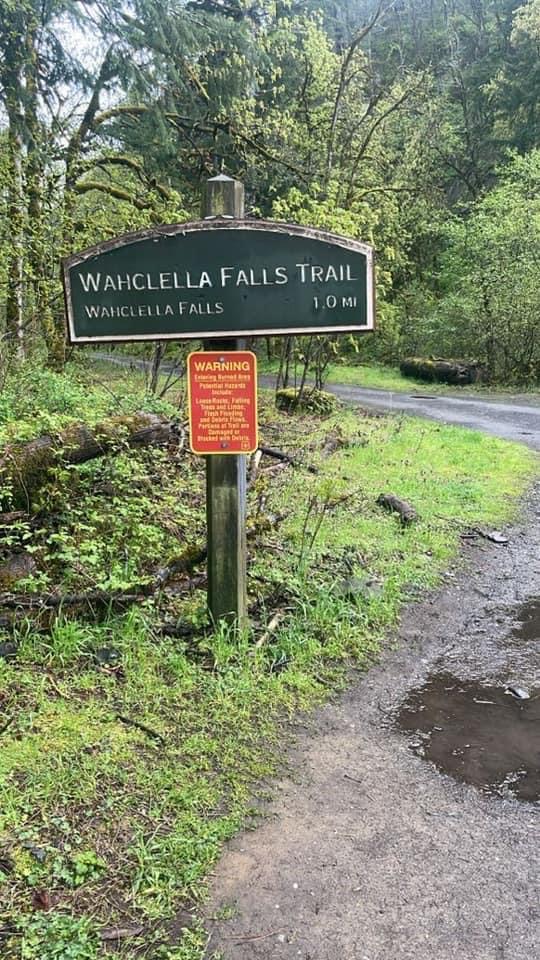
Pro Tips
This segment and so much more is best heard and experienced on our (currently free) GPS audio tour app of the Historic Columbia River Highway. You can start the self-driving tour in downtown Portland, Troutdale, or anywhere on the route. The Historic Columbia River Highway portion is bookended on the east by Ainsworth State Park. The app works in either direction. Also included on our app is a tour to Mount Hood and Timberline with more tours being released every month.
To avoid the hassle of traffic, we highly recommend parking at Bridal Veil Falls parking area and using Sasquatch Shuttles for the ultimate car-free (and carefree) experience. Combine that with our audio tour and – voila! – you have yourself an epic visit to the historic highway. Plus, visitors using tour buses get to visit Multnomah Falls without a reserved ticket!
Guided tours also have access to the falls and beyond. For other car free options, such as using the Columbia Area Transit (CAT), visit ColumbiaGorgeCarfree.com.
If you do want to visit Multnomah Falls in your own vehicle, make sure to either reserve a ticket in advance, or to visit before 9am or after 6pm, as tickets are not required outside of daytime hours. Off season travel times (late fall to early spring) also give visitors an opportunity to enjoy the majesty of Multnomah Falls without the crowds.
Parting thoughts: Overcrowding and wildfires
As you head east from Multnomah Falls and near the eastern terminus of this stretch of highway, you’ll cross Oneonta Creek. The Oneonta Tunnel reopened to pedestrians in 2020 and you’ll see the parking up ahead. In another lifetime, I might have recommended you stop here and follow Oneonta Creek a half-mile to a pool at the base of Lower Oneonta Falls. For years, thousands of hikers clogged the creek every summer, inching through waist-high water to the base of the 100-foot waterfall in the heart of a moss-covered slot canyon. To say it was the stuff of dreams would be misleading, because man alone is not capable of imagining such beauty.
But over the past decade, Oneonta Gorge became the poster child for what it means for nature to be loved to death. Photos showing hundreds of hikers standing in Oneonta Creek and climbing a massive logjam went viral. Parking lots filled to capacity all summer long. Finally, new marketing campaigns encouraged off-hour visits, and the U.S. Forest Service wondered what more could be done to protect the Gorge’s fragile ecosystem.
Incidentally enough, today Oneonta Creek is fenced off and closed to the public—not because of thousands of irresponsible tourists, but because of the actions of a single reckless visitor. In late 2017, a teenager playing with fireworks nearby sparked what would come to be known as the Eagle Creek Fire. The devastating wildfire started over Labor Day Weekend, quickly forcing local evacuations and threatening the town of Cascade Locks. At one point, ash carried as far as Portland. By the time the fire was contained on November 30, the fire had burned nearly 50,000 acres of lush gorge forest—about two times the size of Disney World. The fire even jumped the Columbia River at one point. Remarkably, no lives were lost.
It’s easy to look at the Eagle Creek Fire as the inevitable climax of a story that began with the onset of Instagram and the influx of roughly 2 million visitors every year. But the fire was only the latest chapter in an ongoing story that dates back nearly 200 years.
Learn more on our guided audio tours.
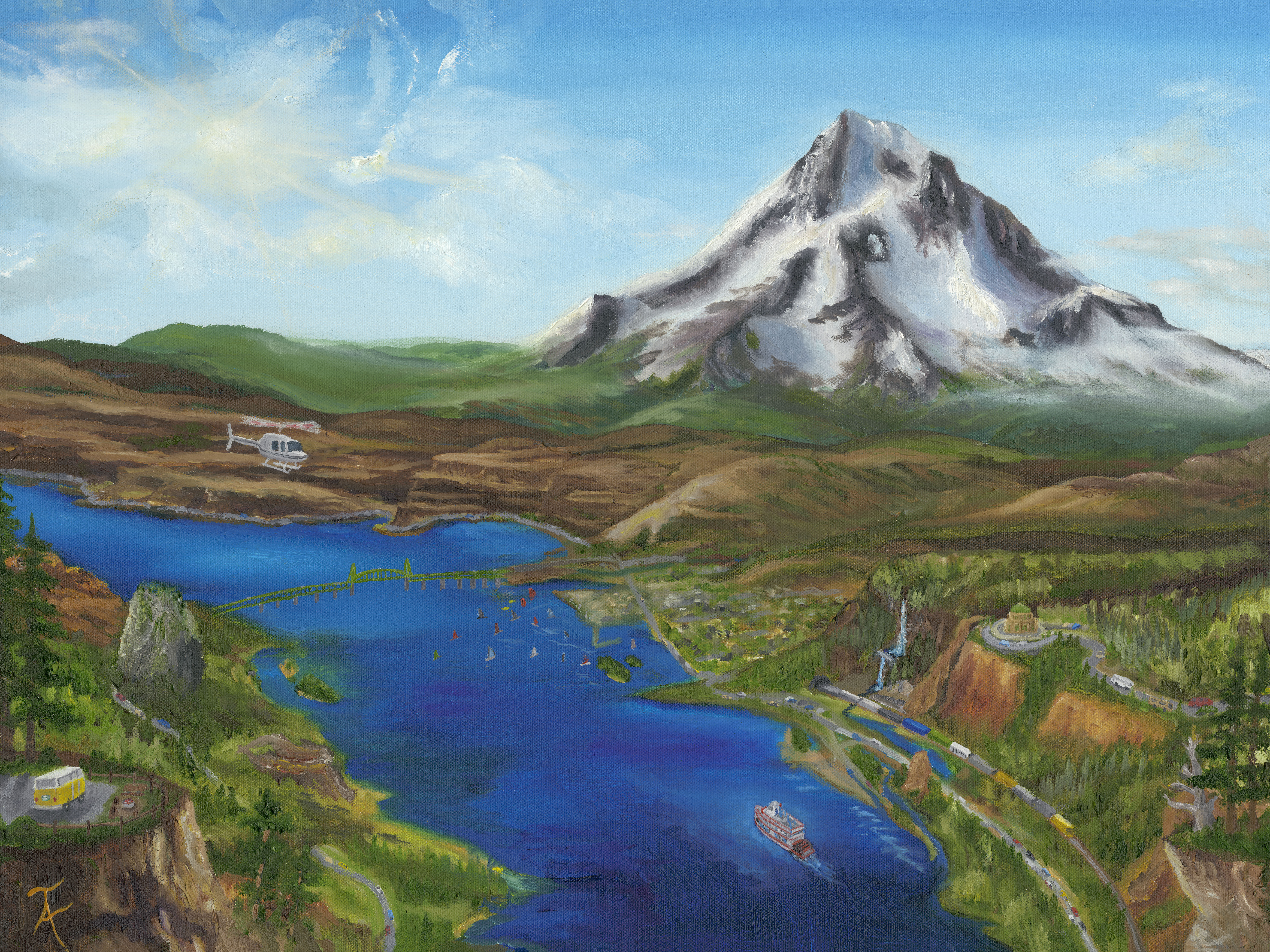
Together Anywhere has created a way to explore Oregon through stories while driving, remaining separate from other travelers as you go down the road, learning more about this beautiful place we get to live. This post is an example of our tours, except our tours speak to you. You just download the app, choose your drive, and you are on your way!
Our tours are ever expanding around Mount Hood, the Columbia Gorge and Oregon at large!
Tour content for the Historic Columbia River Highway by Matthew Wastradowski for Together Anywhere.
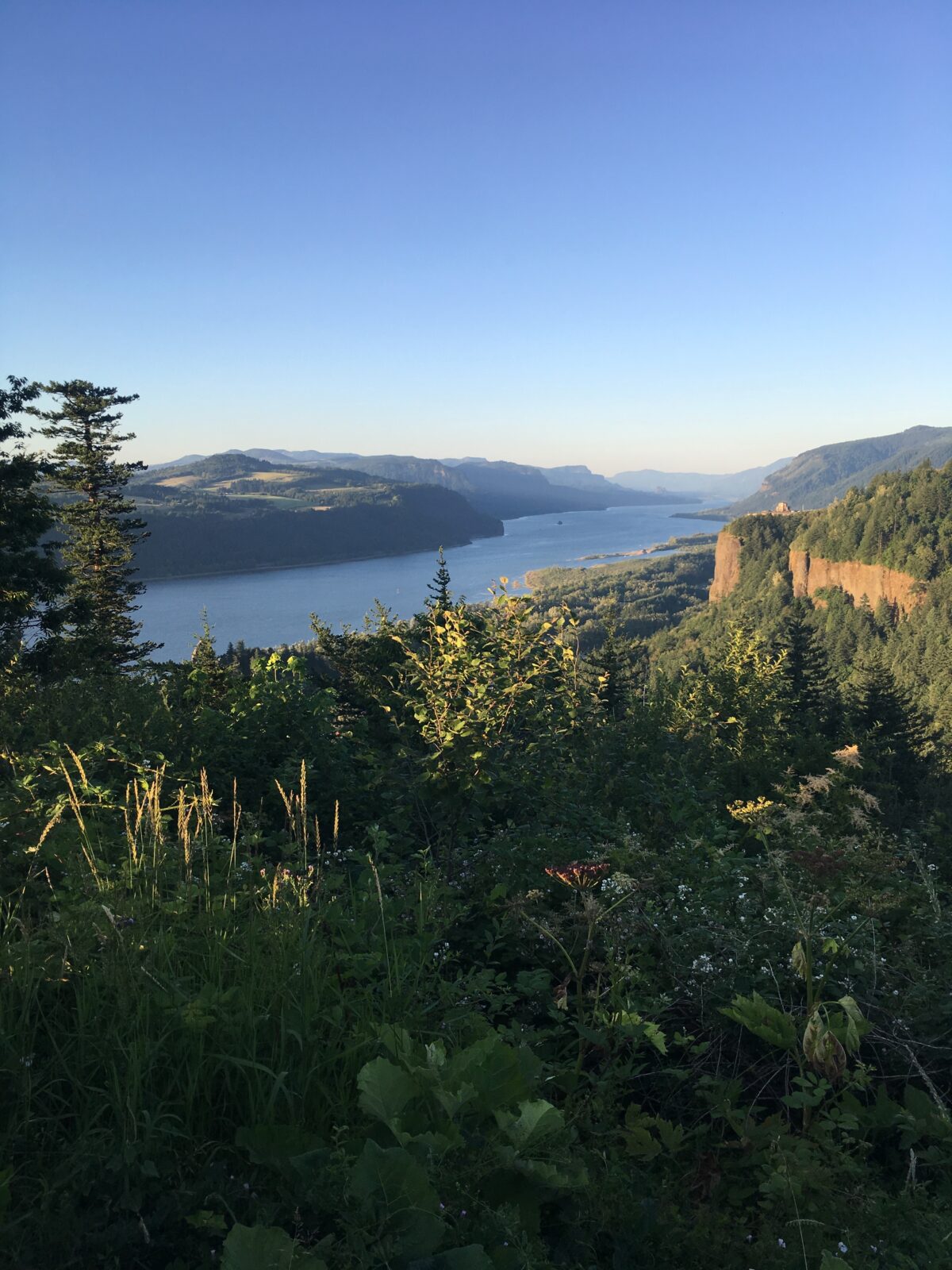
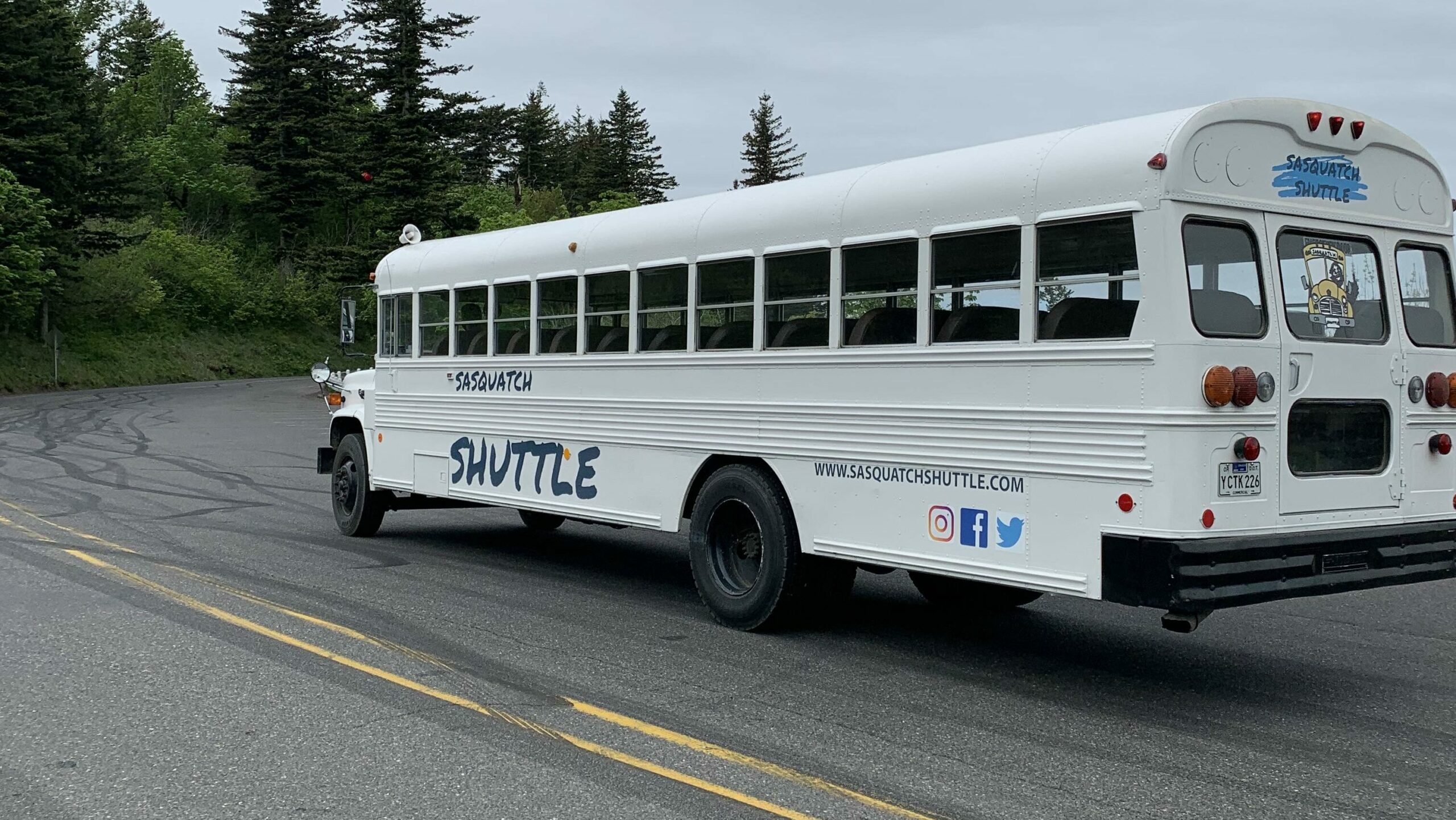
2 replies on “5 must-see stops on the Historic Columbia River Highway…”
[…] enjoy this area if a trip to Multnomah Falls is not in the cards. Check out our other post ‘5 must-see stops on the Historic Columbia River Highway‘ to get a few […]
[…] more about this area: 5 must-see stops on the Historic Columbia River Highway You can also extend your drive by exploring our full tour of the Columbia Gorge National Scenic […]